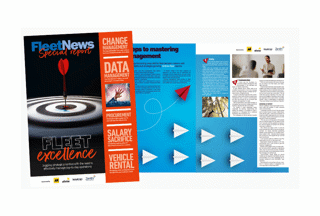By Mark Cartwright, National Highways head of commercial vehicle incident prevention
Statistically, five people will die on our roads today and 50 to 60 people will be seriously injured, many with life-changing injuries.
That’s five families devastated: someone’s mum, dad, son, daughter, brother or sister. A friend, neighbour, colleague.
We can do something about this by driving change in our own organisations, as well as in our private lives.
Many organisations have mature, robust health and safety commitments and processes, and manage risk within their offices, construction sites, production and storage facilities really well. But do they ‘get’ that their moral and, indeed, legal responsibilities extend to the road?
Health and Safety legislation is very clear: duties, both at a corporate level and personal level, extend to all areas of activity and they extend to suppliers, contractors and supply chain.
That’s where we can really make a change.
Over half of all registered vehicles in the UK are driven for work in some capacity and, if you looked at any busy piece of motorway during a normal working day, it might be way more – 60%, 70%, 80%?
If they’re driven for work, we can influence choices and behaviours in the same way we would in any other area of our operations.
So, let’s use our positions to influence and mandate behaviours and choices through our employer/employee relationships, through our relationships with suppliers, contractors and supply chains.
UK collision causes are not easily identifiable. Up to 20% of collisions are thought to involve fatigue; and more than 1,640 fatal and serious collisions each year are linked to drugs or and 230 fatalities to drink-driving.
Let’s recognise that if we want to reduce collisions in at-work vehicles, we need to manage the human factors which cause them.
The real causes of collision are rarely the road or the vehicle: it’s normally the attitudes, disposition and actions of the person behind the wheel.
Impairment, distraction, fatigue, medical issues and inappropriate attitudes to risk underlie a huge proportion of driver errors.
Collisions happen for a reason and if we identify those reason and act, we can prevent collisions.
This means company managers being aware of the factors which might make someone unfit to drive and being prepared to address them, not just with discipline but with understanding.
We need to create cultures where drivers can say, ‘I can’t drive today because I couldn’t sleep last night,’ and for that to be accepted without penalty.
The first step in understanding the underlying factors and taking preventative action is investigating all incidents, which is why National Highways is launching an Incident Investigation Toolkit.
Collision investigator Andrew Drewary, known to many in the fleet sector, says that most companies’ ‘investigations’ focus purely on interviewing the driver and examining actions in the moments before and during the collision.
However, this is rarely sufficient to uncover the real issues. Valuable investigations cover the driver’s work schedule, including demands and targets, management attitudes and behaviour, driving at work policies and enforcement, routeing, impairment tests, and whether or not the incident revealed a pattern of organisational pressure or driver risk-taking.
We can learn from other industries and sectors.
Best-selling Black Box Thinking author and inspirational speaker Matthew Syed made a ground-breaking comparison of the health care industry’s response to fatal safety incidents and that of the international aviation industry.
In his book, he looks at the roles of culture, deference versus open communication, and defensiveness versus proactivity, and what information organisations consider relevant and irrelevant.
He uncovers the huge safety benefits which occur when all employees are mandated to challenge behaviour; when causes are identified and solved, often by simple interventions; and when organisations and sectors refuse to accept that risk is unavoidable and make a conscious decision to understand and eliminate it.
Ultimately the airline industry has been far more effective at identifying and mitigating the causes of safety failures than the medical industry. We can learn much more.




















Login to comment
Comments
No comments have been made yet.